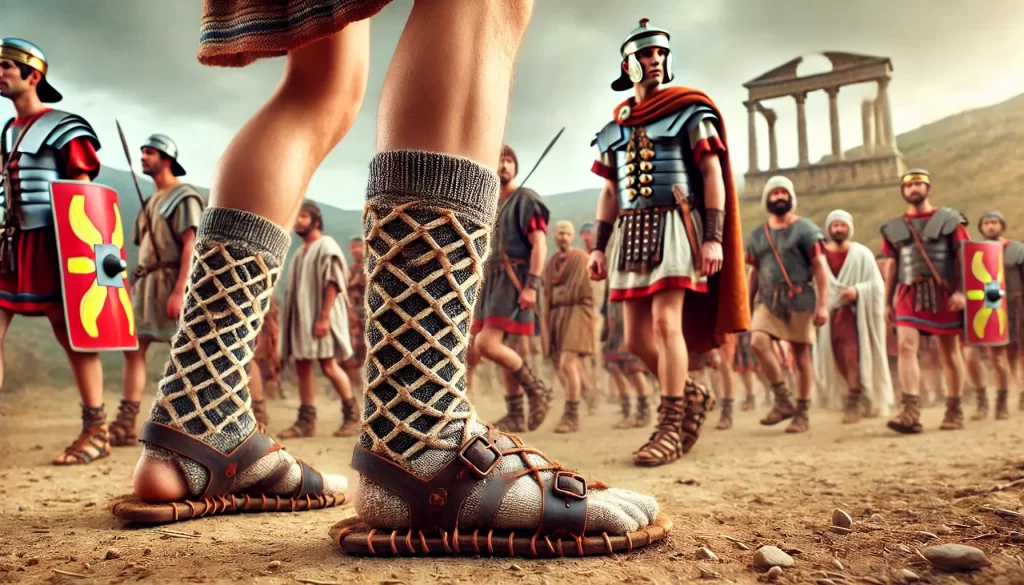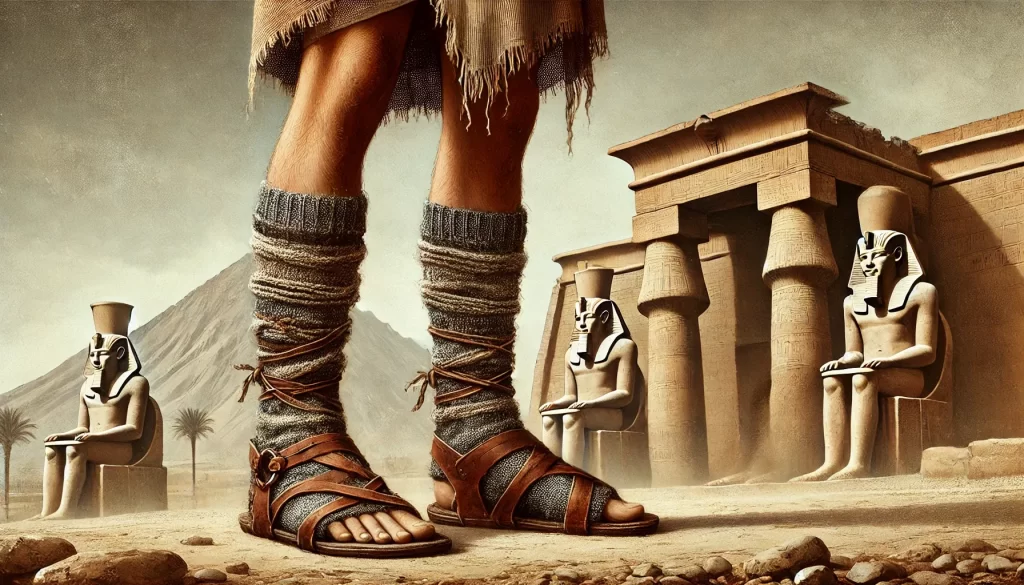Table of Contents
Have you ever wondered when socks were invented? You’re not alone! Socks are so every day in our daily lives that it’s easy to forget they have a rich history. Socks have evolved in fascinating ways from ancient to modern times, including the introduction of ankle socks. Today, we’ll explore how socks started, their journey through time, and how they became essential to every wardrobe.
The Origins of Socks: Ancient Beginnings
When were socks invented? To find the answer, we must travel back thousands of years. The earliest socks can be traced to ancient civilizations like Egypt and Greece, where they were made from matted animal skins. These first socks weren’t the soft, knitted ones we know today. Instead, they were made from animal skins or matted hair to protect feet from harsh conditions.
In ancient Egypt, for example, socks were often made of wool or leather and worn with sandals. Yes, you read that right! Even the ancient Egyptians wore socks with sandals—a fashion choice still sparks debate today. These early socks were practical, offering warmth and comfort to the wearer, and were often made from matted animal hair.
Meanwhile, in ancient Greece, socks were called “piloi,” they were often made from matted animal hair, showcasing the materials used in early sock designs. The Greeks would wear these socks inside their boots for extra comfort, showing that socks have always been about more than just warmth—they’ve always played a role in comfort and practicality, much like the fitted socks of today.
Roman Empire and the Rise of Sock Popularity

As we progress in history, we arrive at the Roman Empire, when fitted socks began to take on a more recognizable form. Roman socks, called pieces of fabric, were made from woven textiles, marking an early example of the diverse styles of socks that would follow. udones and socks were made from woven fabrics, which evolved into modern elastic designs.
Soldiers typically wore these socks to keep their feet warm during long marches. The Romans were known for their advanced textile techniques, and their socks were no exception, often made from matted animal hair and designed for comfort. The introduction of woven socks marked a significant shift from the earlier, more primitive versions.
The popularity of socks continued to spread across the Roman Empire, and they became a symbol of status. Wealthier Romans would wear more elaborate socks, while the common folk stuck with simpler versions. It’s fascinating to think how socks, something so simple, could indicate social class in ancient times!
The Medieval Era: Socks as a Symbol of Wealth
By the Middle Ages, socks had become more than a necessity—they were a status symbol, particularly for ankle socks, a pilot style. But when were socks invented in their more modern form in the history of socks? During this period, socks began to look more like the ones we wear today. In medieval Europe, socks were known as hose. These hose were often brightly colored and made from wool or silk, and they were a vital part of a fashionable wardrobe.
For the wealthy, the hose was an indicator of social rank, often made from elastic materials—the more elaborate and colorful your socks, the higher your status, particularly with crew socks. Knights and noblemen wore knee-high hoses to show off their wealth, while the working class often made do with more straightforward, shorter socks. It’s incredible how socks shifted from a practical item to a fashion statement during this period.
The Industrial Revolution: A Changer for Socks

Socks entered the modern era during the Industrial Revolution in the 18th century. But exactly when were socks invented as a mass-produced item? The answer lies in the invention of the knitting machine. This revolutionary invention of socks by William Lee in 1589 laid the foundation for socks to be produced faster and more efficiently.
By the 19th century, factories were churning socks in large quantities, making them affordable. Socks were no longer just for the wealthy—they became a mass-produced item everyone could own. This period saw the rise of cotton socks, which were more comfortable and easier to clean than wool socks. The affordability and accessibility of crew socks during this time meant that socks became a staple in every wardrobe.
Also Read: The Benefits of Modern Electrical Installation in Homes
Modern Socks: From Function to Fashion
As we move into the 20th and 21st centuries, socks are designed to serve an entirely new role, blending function with fashion. Socks are no longer just functional—they’ve become a way to express individuality and style, with many opting for crazy socks. From fun, quirky patterns to sleek athletic socks, there’s a pair for every occasion and personality.
When were socks invented as a fashion statement? It’s hard to pinpoint an exact moment, but the 1960s and 70s saw a massive shift in how people thought about socks. Bright colors, bold designs, and even novelty socks became popular. Today, socks are not just for keeping feet warm—they’re a way to make a statement.
And let’s not forget about the advancements in sock technology, which have transformed how we make socks today, leading to the invention of various styles of socks. Today’s socks include moisture-wicking, compression support, and even antibacterial properties. Socks have come a long way from their humble beginnings, evolving through the invention of socks over the centuries!
Why Socks Remain Essential Today

So, when were socks invented in the history of socks? While the exact moment in history may be unclear, one thing is for sure—socks have been around for thousands of years, and they’re not going anywhere, continually evolving in the history of socks.
Today, socks remain a vital part of our daily lives. Whether you’re dressing up for work, heading to the gym, or lounging around the house, there’s always a style of sock to suit your needs.
Socks have evolved from animal skins to high-tech fabrics, but their purpose remains: to protect our feet and provide comfort. As we’ve seen, socks have also taken on new roles throughout history, from status symbols to fashion accessories. It’s incredible to think about the long and fascinating journey socks have been on.
Closing Thoughts
The next time you slip on a pair of socks, take a moment to think about their rich history. From the age-old Egyptians and Greeks to the modern-day, socks have been an essential part of human life.
So, when were socks invented? While the exact date may be lost to history, it’s clear that socks have come a long way. Today, they’re not just about warmth—they’re about comfort, style, and even self-expression. Socks may be simple, but their history is anything but.
FAQs:
When were socks invented?
Socks date back to ancient times, with the earliest socks made from animal skins and matted hair worn by Egyptians and Greeks over 2,000 years ago.
Why were socks invented?
In ancient times, socks were originally invented for protection and warmth, shielding feet from harsh weather and rough surfaces.
What were socks made of in ancient times?
In ancient times, socks were made from animal skins, wool, and matted hair.




